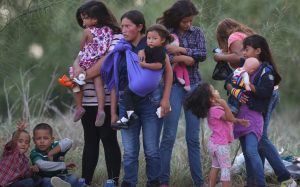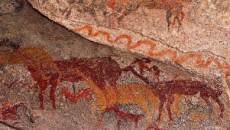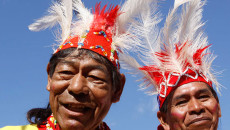By Ana Maria Hanssen

ARGENTINA: I used to think Americans were the only ones that had trouble with geography. I lived in Los Angeles for 6 years, a cosmopolitan metropolis where millions of people from all over the world cross paths everyday.
It never ceased to amaze me when people, after I would explain that I was from Colombia, would ask me if I was from “British Columbia,†or perhaps from the “District of Columbia.â€
I was even asked if Colombia shares a border with Chile. I have encountered a similar phenomenon here in Argentina which I am also having a tough time understanding. When I say I come from Colombia, for some reason people immediately respond by commenting as if Colombia was in Central America.
I’ve heard everything from “Of course, you guys from Central America†to “you must be used to the great weather in Central America I bet you miss it.†I can’t help but wonder why so many Argentines include Colombia as a part of Central America or that Central America is now designated as part of the northern part of South America.

Fortunately, and for all the wrong reasons, Colombia has been showing up on the Argentines’ radar as of late. Due to the failed first attempt to release three hostages held by the FARC guerrillas, in which President Kirschner and Venezuelan President Chavez acted as mediators, the common Argentine has shown increased interest and solidarity with the problems that affect Colombia.
Some have even labeled Kirschner an “opportunist†for appearing alongside Chavez who, in the eyes of many, has been taking advantage of the conflict in order to be the star in his own media show.
Colombia didn’t just appear on the Argentine political radar after the latter’s ex-president acted as a mediator in the failed “Emmanuel Operation†(as president Chavez labeled the operation in reference to the young boy who was to be liberated). It has also been an element of tension in the already strained relationship between Argentina and the United States, a relationship recently affected by Venezuelan-American Antonini Wilson’s “Suitcase Gate†scandal.
After a prosecutor declared that the hundreds of thousand of dollars were allegedly destined towards Christina Kirschner’s presidential campaign coffers, President Kirschner and her husband lashed out against Washington and simultaneously moved closer to Caracas, a government which is the prime antagonist of US interests in the region.
In other words, Argentina’s closeness with Venezuela, in addition to the distant relations between the White House and Buenos Aires, only became more polarized after Kirschner’s collaboration in Chavez’s failed attempt to liberate Colombia’s hostages.

Venezuelan President Hugo Chavez with former Argentine President Nestor Kirschner.
Everything points to a continued instability in the region’s troubled political landscape. Kirschner had to spend his New Year’s Eve in the Colombian jungle; while Chavez criticized Uribe and Uribe claimed that the FARC guerilla actually did not have possession of Emmanuel. (Editor’s Note: a point that was later proved true when the 4-year-old was discovered living within the foster care system in Bogotá.)
As Kirschner said, “We have to work with Venezuelans and Colombians who are Caribbean, which makes them much less predictable than ourselves.†An interesting opinion from someone whom many analysts say is not exactly a model of predictability.
Even with all the attention, I’m at least pleased to see that the Colombian conflict has suddenly appeared in the Latin American conscience.
Even in Argentina, people are finding out that the FARC guerillas have been at war for 50 years.
And of course, this may mean that they will no longer think that Colombia is in Central America.
Here’s hoping.
Learn more about Ana MarÃa
Ana MarÃa Hanssen is a 30-year-old Colombian journalist and freelance writer currently living in Buenos Aires, Argentina.
She is the author of “Holocausto en el silencio”, a book that details the 1985 siege of the Supreme Court palace in Bogota by the M-19 guerrillas – one of the most painful episodes in Colombian history.
As a result of the Army’s violent reaction to this equally violent act, more than one hundred people died — including the nation’s Supreme Justices — eleven still remain missing.
The book won the Colombian Literature Prize for best non-fiction book in 2006.
Ana MarÃa has worked for media in Los Angeles, California; México, Colombia and in her new home, Argentina.




